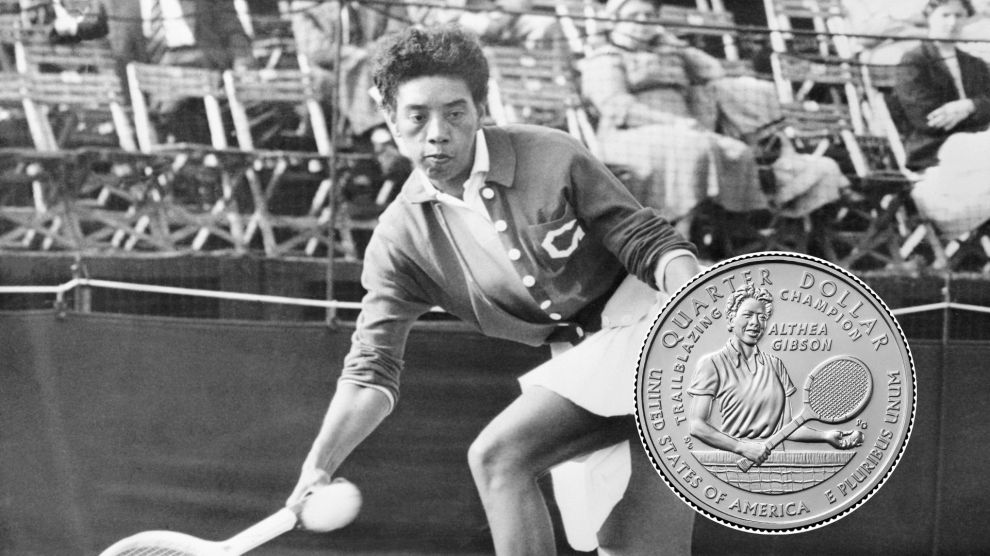Professional tennis player and golfer Althea Gibson’s indelible legacy is being remembered through the U.S American quarter.
The United States Mint (Mint) will begin shipping the 2025 American Women Quarters™ Program (AWQ) coins honoring Althea Gibson—the fifth quarter released in 2025 and the final coin for the entire program—on October 20.
As the press release notes, Gibson was a trailblazing multi-sport athlete who accomplished an impressive list of firsts throughout her career. She was the first Black athlete to break the color barrier at the highest level in tennis, winning 11 Grand Slam titles by the end of the 1950s. She paved the way for future Black athletes and became the face of American achievement in international sports.
Background
The daughter of sharecroppers, Gibson’s success in sports represented possibility and progress during the civil rights movement. She won the New York State championship six times between 1944-1950. In 1947, she won the American Tennis Association (ATA) national women’s title and would go on to have ten consecutive wins the following years.
Gibson’s talent garnered the attention of prominent figures. In 1946, amid Gibson’s many tennis wins, African American physicians Dr. Hubert Eaton of and Dr. Robert W. Johnson took notice of her passion. Johnson mentored and supported her, while Eaton encouraged her to live with him in Wilmington, North Carolina (Greater Wilmington Sports Hall of Fame, International Tennis Hall of Fame). While there, she returned to high school and worked toward her diploma. After earning her diploma, she enrolled at Florida A&M University. In 1955, she received her bachelor’s from FAMU at the age of 27 (PBS 2015).
A Segregated America
Despite her impressive wins, Gibson was still a Black woman, in a segregated United States. However, she was reluctant to discuss social ills of minorities at the time.
“The typical thing was for an African American to be the spokesperson for their race. When Althea was playing, Emmett Till was getting lynched,” Leslie Allen, former tennis player, said. “So that’s why they sent Althea on a State Department tour around the world: here’s a positive image of a black person while we’re hanging people from trees. She wanted to be a tennis player. ‘I am a tennis player. I’m not the spokesperson fo Black people.’ And everybody was always trying to put a mic in her hand to be that.
“Arthur, on the other hand, was interested in [talking about those issues],” Allen continued. “Not that Althea wasn’t interested, but Arthur was willing to be a political advocate or civil rights advocate. Not that Althea wasn’t, but she didn’t have to be vocal about it, she didn’t have to be out front about it.”
In addition to the treatment of her black counterparts, Gibson herself, was denied opportunities outside of the ATA that were afforded to white tennis players. Gibson was not the only one tired of the fact that she was barred from engaging in her craft on a larger scale. Others began to lobby on her behalf in 1950, with white tennis players such as Alice Marble and Sarah Palfrey advocating for her.
Despite the turbulent political times, Gibson dominated the tennis world during the 1950s with remarkable success. She won an impressive 11 Grand Slam titles by the end of the decade. These victories established her as one of the greatest players of her era.
Pre-orders for quarters, rolls, and bags are now available on the usmint.gov website.

